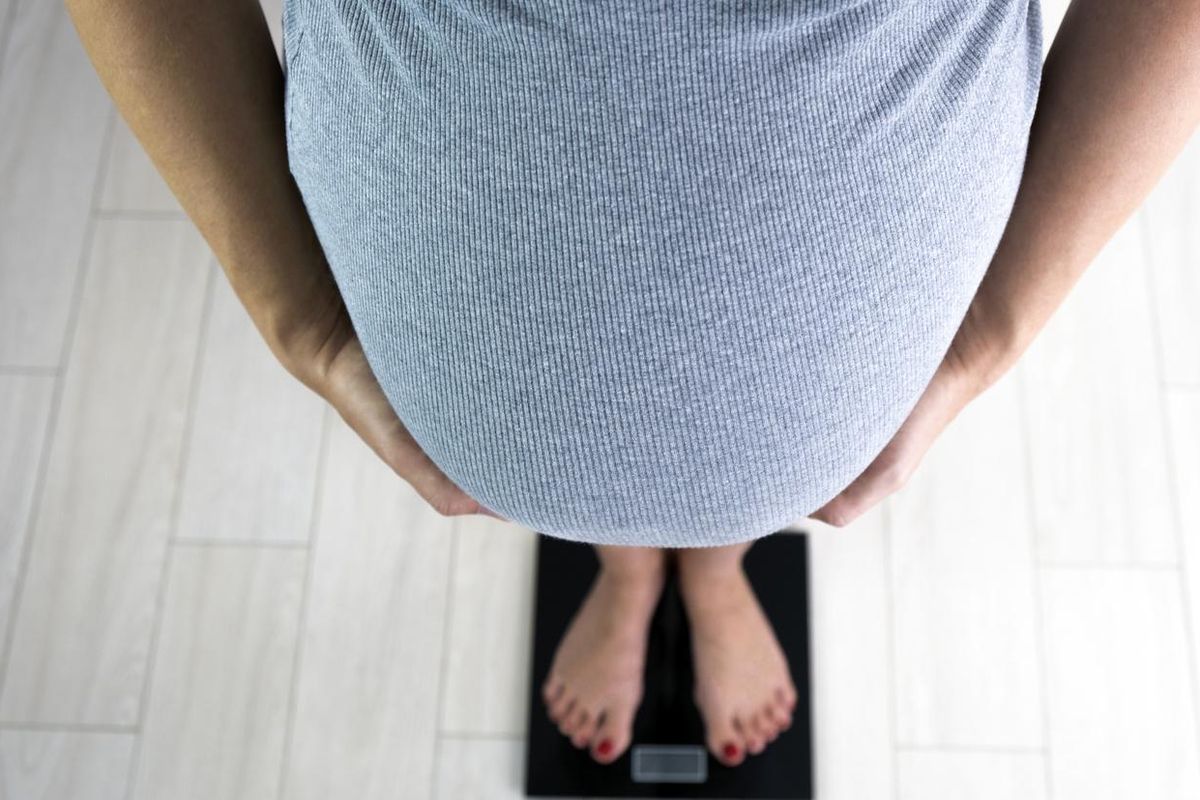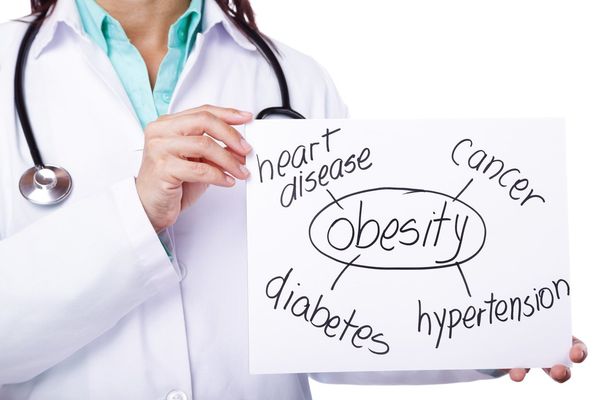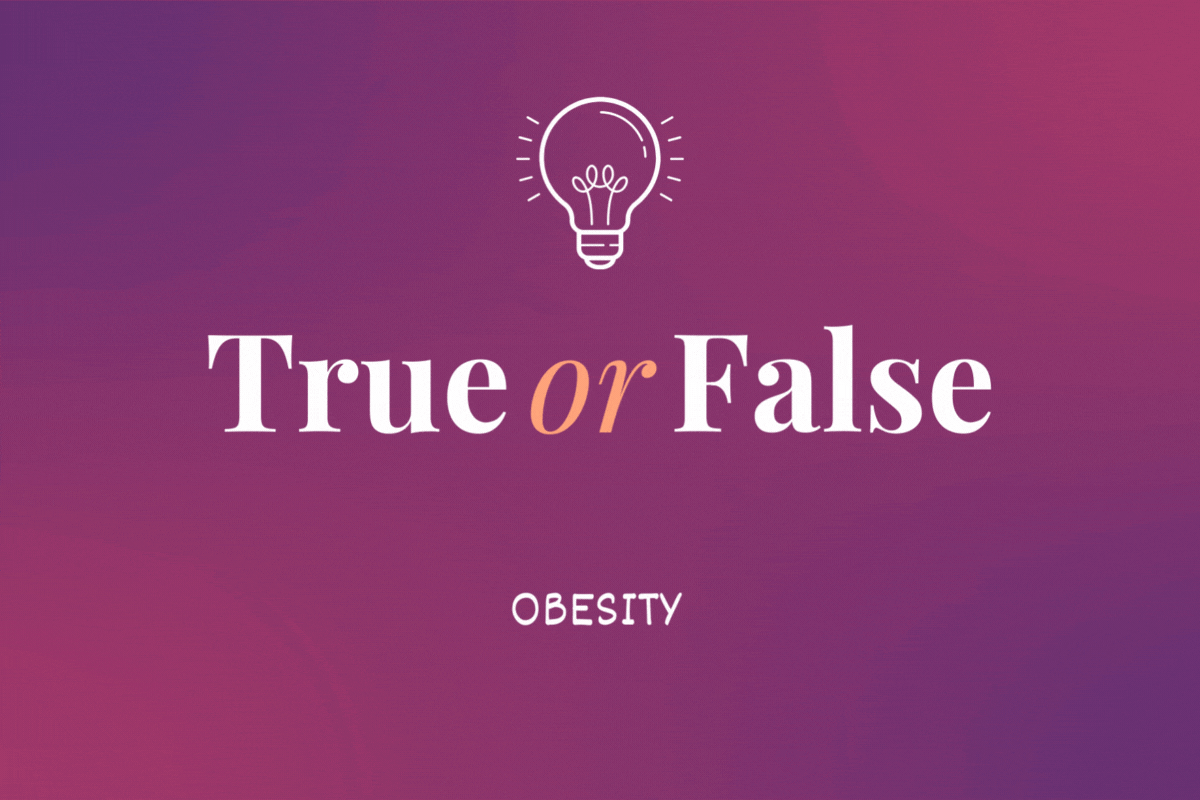Shannon,* a mom of two now in her 40s, found some emotional challenges in dealing with the disease of obesity during her pregnancies, such as grieving for her lack of a “cute” baby bump. “Nobody can tell you’re pregnant … this was sad to me,” Shannon said. “I see thin women and all their cute bump pictures and I didn’t have that. I was just as excited and amazed by the changes in my body and feeling the life growing in me, but those fun pictures weren’t captured because the physical changes weren’t as noticeable.”
Obesity during pregnancy can increase complications
Beyond the emotional stresses of obesity and pregnancy, Shannon also experienced a complication that pregnant people living with obesity often get: gestational diabetes. Around 2%-10% of pregnancies are affected by gestational diabetes, and people of average weight and even those who are underweight can also develop the condition. But pregnant people who have obesity are at a significantly higher risk of gestational diabetes.
In addition to increasing the risk of gestational diabetes, obesity during pregnancy increases the risk of gestational hypertension, preeclampsia and obstructive sleep apnea in the person carrying the child. The fetus faces an increased risk of birth defects, preterm birth, miscarriage and stillbirth, as well as an almost doubled risk of developing prediabetes and Type 2 diabetes later in life.
Holly F. Lofton, M.D., director of the medical weight management program at NYU Langone Health and a member of HealthyWomen’s Women’s Health Advisory Council, noted that gestational diabetes is one of the risks she is most concerned about. Gestational diabetes exposes the fetus to high levels of glucose, which can increase the risk of stillbirth and lead to larger babies at birth, which in turn increases the likelihood of the mother needing a C-section. It can also lead to added stress on the mother and baby, preeclampsia, and an overall difficult birth. “Increased glucose exposure to the fetus in [the womb] is also associated with childhood obesity,” Lofton added. “It feeds the cycle of obesity.”
Gestational diabetes: A type of diabetes that develops in pregnancy. Gestational diabetes usually goes away after delivery, but people who have had gestational diabetes are at higher risk of developing Type 2 diabetes later in life.
Gestational hypertension: High blood pressure during pregnancy. Gestational hypertension usually goes away after giving birth, but it may mean the person has a higher risk of developing chronic hypertension in the future.
Preeclampsia: High blood pressure that develops during pregnancy or the postpartum period, along with high levels of protein in the urine or decreased blood platelets, trouble with the liver or kidneys, and fluid in the lungs or brain symptoms, such as seizures or visual issues. Untreated, preeclampsia can lead to complications such as eclampsia (seizures), which is a dangerous medical condition that needs immediate treatment.
Shannon said that her weight has gone up and down since puberty, but she never thought about how it might affect her pregnancies — and other than recommending a healthy weight gain, her doctors never mentioned her weight as a concern when she informed them of her plans to try to conceive.
Fortunately, other than gestational diabetes, Shannon did not experience any additional complications with her pregnancies. Her babies were born healthy. However, she was told that both of her sons are at a higher risk of developing diabetes in adulthood because she had gestational diabetes. “I pray that’s not the case for them, but only time will tell,” Shannon said.
For people with obesity who have preexisting conditions, pregnancy can greatly increase the risks associated with those conditions for both mother and baby. For example, women with obesity and cardiovascular disease, such as venous thromboembolism, complications from high blood pressure or stroke, are at increased risk of maternal mortality. Cardiac conditions before pregnancy are especially associated with risk during pregnancy because of the excess workload for the heart.
Unfortunately, sometimes the results of being pregnant with obesity can be fatal: Obesity and excess weight almost double the risk of maternal mortality, with that risk more than tripling for pregnant people with severe obesity compared to women with a normal BMI.
Lofton also noted that non-alcoholic fatty liver disease — a condition associated with obesity — is now present in one out of three Americans. And unfortunately, if someone already has liver disease, the additional stress of pregnancy can lead to other problems, such as HELLP syndrome, a dangerous pregnancy condition that is thought to be a type of preeclampsia. HELLP stands for the three indicators of the condition: hemolysis (the breakdown of red blood cells), elevated liver enzymes (which means there may be liver problems) and low platelets (which causes problems with blood clotting).
And last but not least, there are significant financial costs to managing pregnancy care alongside obesity: Maternal overweight, gestational diabetes mellitus and larger-than-average babies are estimated to result in $1.8 billion in annual health expenditures.
Racial disparities for people who have obesity during pregnancy
Disparities in obesity may make the disparities faced by pregnant women of color worse. For instance, both Black women in general and pregnant women of color experience higher rates of obesity, hypertension, diabetes and chronic illness, all of which are strongly associated with negative maternal outcomes. And non-Hispanic Black women in the U.S. are three times more likely to have a maternal death compared to white women.
Black and Asian and Pacific Islander women also have the highest rates of maternal mortality of any ethnic group. And on top of that, African American women have the highest rates of obesity among any demographic group: More than three out of four African American women of reproductive age having excess weight or obesity.
The fact that more women of color may already have obesity when they get pregnant has a large effect on the increase in maternal death rates and complications. Lofton pointed out that racial disparities for obesity extend far beyond reproduction. Factors such as food insecurity, financial access, access to healthy food options and even food marketing practices all contribute to creating communities with higher obesity rates. Additionally, along with environmental factors, there are very real factors that contribute to obesity among many racial groups, including racism’s impact on work, a lack of income, and interrupted sleep, which can cause hormonal changes related to obesity.
How to decrease the risks associated with obesity and pregnancy
Knowing the risks of obesity and pregnancy, what can be done? Well, as Lofton explained, the ideal step to take is to get to a healthier weight before pregnancy. If you can, visit your doctor as soon as you start thinking about getting pregnant, for a full health and fertility assessment and ask for resources if weight loss is recommended. “The idea of preconception weight loss is to start at a lower weight so that weight gain during pregnancy can occur,” she said.
However, that doesn’t always happen, and weight loss medication is not recommended within three months of trying to conceive. Lofton said the next step is to try to follow a healthcare provider’s recommendation for weight gain during pregnancy based on your starting weight.
She stressed that pregnant people who have obesity should also use professional resources to stay healthy during their pregnancies. For instance, she said a dietitian can help with nutrition and help avoid potentially preventable complications such as gestational diabetes. “The goal is not to lose weight while pregnant — the goal is to avoid diabetes. People who are pregnant are hungry! You don’t need to deny that hunger.”
Some people may also have trouble getting pregnant as a result of obesity or excess weight, so it may be helpful to look for a fertility specialist who can help them get pregnant and minimize additional weight gain — some fertility treatments, including in-vitro fertilization, can cause weight gain.
Lofton encouraged anyone who is living with obesity and is considering getting pregnant or is already pregnant to remember that, while being pregnant with obesity does have some potential challenges, it’s not impossible. Working closely with your healthcare team to assess any potential risks, following recommendations and using resources to manage your condition are key — as is recognizing the incredible journey you’re on.
“It doesn't mean the baby or the mother is doomed,” she said. “It can be a wonderful thing.”
*First name only has been used for privacy.
This resource was created with support from Novo Nordisk.
- Pregnancy and Dietary Changes ›
- FAQs on Gestational Diabetes - HealthyWomen ›
- The Role of Nurse Practitioners in Women’s Health: Maternal Health - HealthyWomen ›
- Living with Obesity as You Age - HealthyWomen ›







